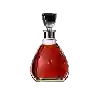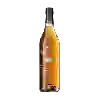
Winery LaetitiaBanyuls Doux Naturel
This wine generally goes well with beef, lamb or mature and hard cheese.
Food and wine pairings with Banyuls Doux Naturel
Pairings that work perfectly with Banyuls Doux Naturel
Original food and wine pairings with Banyuls Doux Naturel
The Banyuls Doux Naturel of Winery Laetitia matches generally quite well with dishes of mature and hard cheese, blue cheese or aperitif such as recipes of chicken nuggets with cheese, guinea fowl supreme with pears and roquefort cheese or sunshine pie with tomato pesto and pine nuts.
Details and technical informations about Winery Laetitia's Banyuls Doux Naturel.
Discover the grape variety: Aidani
This grape variety has been cultivated in Greece for a very long time - most often at high altitudes - more specifically in the Cyclades islands, the island of Rhodes, Crete, etc. and is practically unknown in other wine-producing countries, including France. We can meet the black aidani or mavro, very rare, it has however no link with the white or aspro.
Informations about the Winery Laetitia
The Winery Laetitia is one of of the world's greatest estates. It offers 2 wines for sale in the of Banyuls to come and discover on site or to buy online.
The wine region of Banyuls
Banyuls wines come from the South-eastern Part of Roussillon, in the south of France, in the lower Pyrenees, a few kilometres from the Spanish border. These naturally Sweet wines are consumed both as an aperitif and as a dessert. They come in a wide range of hues, from GoldenGreen (Banyuls Blanc) to Amber (Banyuls Ambré) to the intense garnet of the standard Banyuls Rouge. Unusually among the natural sweet wines of France, all Banyuls wines are made primarily from Grenache grapes of various colors.
The wine region of Languedoc-Roussillon
Languedoc (formerly Coteaux du Languedoc) is a key appellation used in the Languedoc-Roussillon wine region of southern France. It covers Dry table wines of all three colors (red, white and rosé) from the entire region, but leaves Sweet and Sparkling wines to other more specialized appellations. About 75% of all Languedoc wines are red, with the remaining 25% split roughly down the middle between whites and rosés. The appellation covers most of the Languedoc region and almost a third of all the vineyards in France.
The word of the wine: Gutedel
See chasselas.










